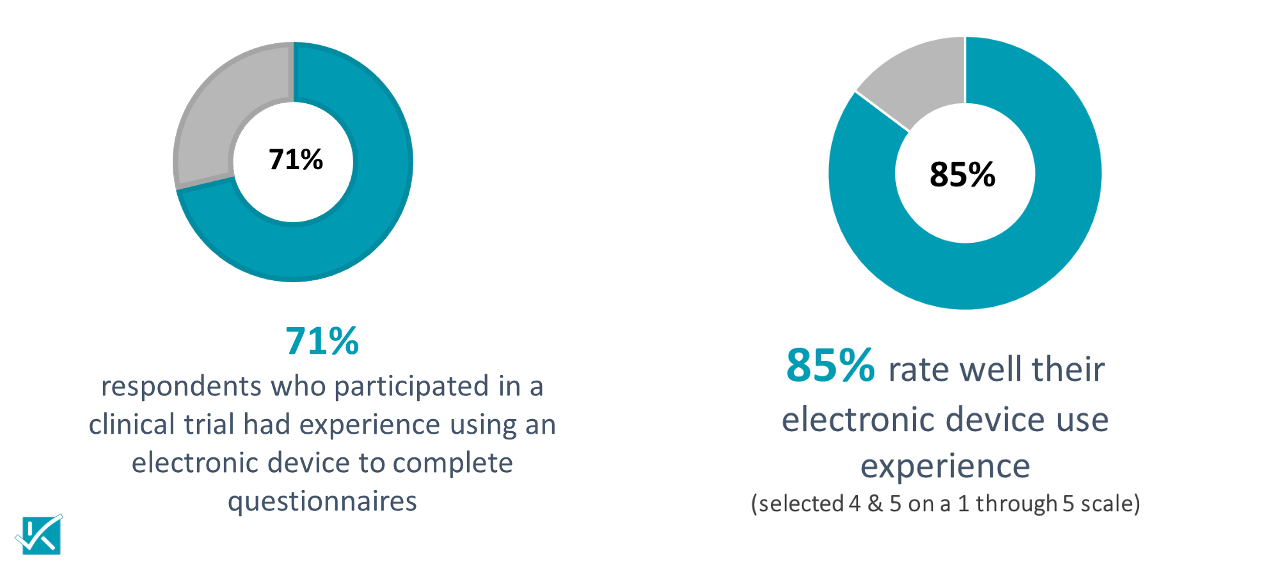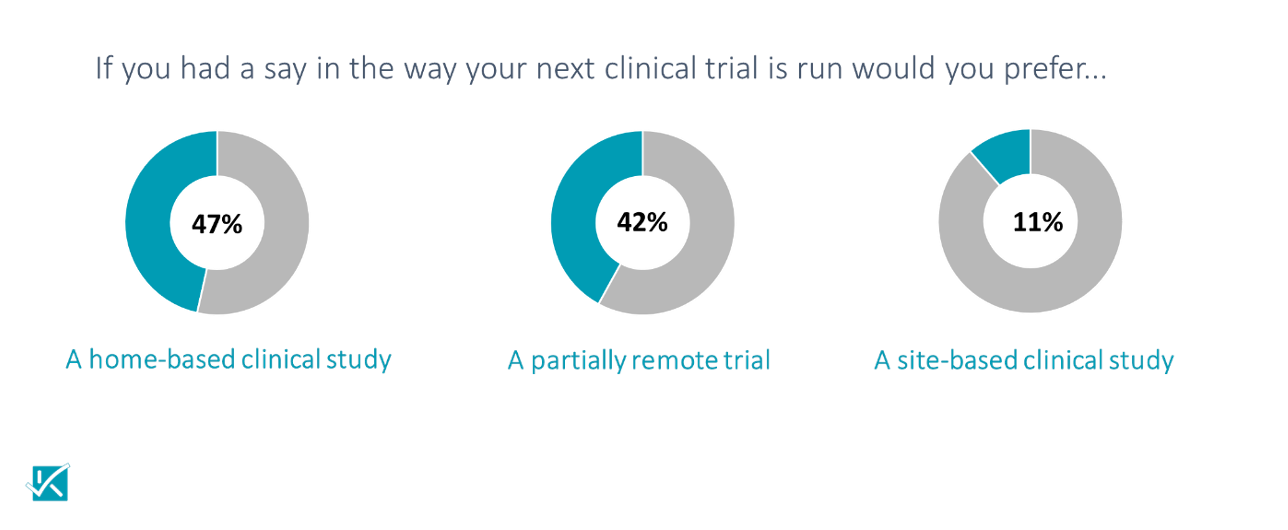Digitalization Trends in Tackling the Complexity of Clinical Trials for Patients with Multiple Health Conditions
Digitalization has been progressively facilitating increased access to trials by helping alleviate logistical burdens, but not much is known about how these tools can address the needs of patients with multiple chronic conditions.
Patients participating in clinical research face a whole range of challenges. For those living with multiple chronic conditions, the obstacles are greater. While digitalization has been progressively facilitating increased access to clinical trials by helping alleviate logistical burdens, less is known about how well these digital tools address the specific needs of clinical trial patients with multiple chronic conditions. To what extent are these patients ready for hybrid and remote trials?
A qualitative study investigating the experiences and expectations of 1,133 clinical trial patients with multiple chronic conditions was conducted using digital solutions. Between November 2020 and January 2021, respondents from several patient associations across North America and the EU volunteered to respond to a survey. As the pandemic significantly impacted clinical trial continuity and catalyzed their digitalization, the study also explored patient readiness for remote clinical trials. Direct feedback from patients, a third of whom live with chronic conditions in more than one therapeutic area—which creates an additional obstacle to clinical trial access, complements and nuances these findings.
How digital technology in clinical trials responds to the needs of patients with multiple chronic conditions
Clinical trials have been using digital technologies as solutions to increase data quality, while helping patients face logistical challenges. Among the most prevalent digital solutions are electronic Clinical Outcome Assessment (eCOA), used for both structured visits as well as in unstructured operational models. These can be instances where electronic Patient Reported Outcomes (ePROs) are completed between clinic visits, during telehealth virtual visits or at-home health visits; this model allows patients to remain compliant within the comfort of their homes. WebCOA is an alternative option allowing a patient to complete questionnaires at home under the control of site staff. WebCoA1 guarantees consistency in both protocol visit scheduling and patient adherence to protocol, while allowing patients in the trial to remain comfortably at home. This can be particularly helpful for patients who are in pain from multiple conditions or unable to travel to the site, as witnessed by Penny-Mary, a Canadian interviewee who has been living with multiple sclerosis, fibromyalgia and osteoarthritis for several years. She commented on the severe day-to-day impact on mobility of living with those three different conditions combined: “For walking I [usually] use a cane in the apartment. And if I go outside, I have a four-wheel walker [that] I use, cause otherwise it’s pretty hard yet moving anywhere.”
While digitalization methods offer much potential in facilitating increased access to, and alleviating patient burden in, clinical trials, it is important to look at how emerging technologies are perceived by clinical trial patients with multiple conditions.
Clinical trial patients with multiple chronic conditions rate digital solutions positively
The survey showed that overall, clinical trial patients with multiple chronic conditions rate well their experience of using digital solution in the context of a clinical trial.
This study also revealed that 26% of all participants were living with more than one condition. This is important when considering selection in a clinical trial: patients are generally considered for a clinical trial exploring one condition. Living with several might either exclude them from the study or they may experience additional challenges when participating in research.
Respondents were then asked about using electronic solutions. Among those who had already participated in a clinical trial (1/3 of total respondents), 71% had used at least one electronic device. Usage was spread across age ranges.

More than 85% of those patients, who had used at least one electronic device in a clinical trial, rated their experience of digital solutions as four or five, on a numerical scale from one (representing the worse experience) through five (representing the best experience). This ranking was independent of age or disease type. This very positive reaction towards use of digital solutions was voiced by Sheila K, an acromegaly patient from Italy, who claimed: “I am passionate [about] technology; it has been instrumental [in] improving mine and many patients’ lives!”
David, a UK patient living with neurology disorders, commented on how technology can help patients undergoing clinical trials by monitoring their day-to-day experiences: “When information on symptoms has to be provided every day, it’s much easier to provide it from home with digital tools rather than writing things down or having to go to the hospital.”
Interest in using these technologies to enable trial decentralization and support the effectiveness of traditional trials has exploded since the pandemic outbreak, driving innovation in a patient-centric manner. Since the study indicated significant patient satisfaction with digital technologies, the next step was to look at how receptive patients might be towards disruptive decentralized models.
How ready are patients for decentralized clinical trials?
COVID-19 meant that clinical trial patients could no longer be expected to attend on-site visits. Clinical trial digitalization grew due to the adjustments needed to enable them to continue while maintaining patient safety. Survey respondents were asked about having a say in the way their next clinical trial would be run. Three scenarios were proposed:
- A Home-based study or fully Decentralized Clinical Trials (DCTs), relying on numerous locations, including using local laboratories and the patient’s home where many trial procedures can take place
- A partially remote trial, also called hybrid clinical trial, where part of the visits occurs at the clinical site, but some protocol procedures can also take place at the patient’s home
- A site-based clinical study, where all the visits and study related procedures happen at site, as it used to work traditionally.
Although DCTs are not new, the ability to manage them more effectively with technology is a more recent phenomenon. The increased use of technology allows several operating models to be envisioned. Clinical trials can now consist of a fully virtual approach, where patients can participate remotely and not have to visit a clinical site, or hybrid trials, a mix between traditional site visits, which may be required to complete an EKG or undergo a tumor biopsy and remote visits.

Regarding respondent preferences for either a fully home-based study (presented in the survey as corresponding to a DCT model where most of/all visits happen at home), a hybrid study (visits happen either on-site or at home in a hybrid manner) or a traditional site-based study (all visits happen at the clinical site), during COVID-19, 89% of patients said they preferred either a fully decentralized/home-based (47%) or a hybrid (42%) clinical trial model. This was true across every category of patient: neither age nor therapeutic condition had any impact on this result.
The fact that only 11% of patients interviewed prefer the traditional site visit model supports the hypothesis that the pandemic acted as a strong catalyst for modifying attitudes, patients became more ready to accept digitalization as the new norm in conducting clinical trials.
Respondent feedback on clinical trial digitalization indicated that its advantages, such as its convenience and ability to help patients overcome logistical hurdles, were well perceived and appreciated, to the extent of improving opportunities for wider patient populations to join a clinical trial. David summed up what many patients expressed: “In multiple sclerosis, where you have a severely progressive disease, you might not even want to volunteer for a clinical trial, because of the travel and logistics burden. Digitalization of the research will allow recruitment of more severely [ill] patients or [those] living in remote areas."
Although our investigation did not enquire about replacing telephone calls with on-site visits, Penny-Mary was insightful on this subject: “I actually have had several phone calls with my doctors, I was not impressed at all, I had [the] feeling that he was rushing and wanted to get off the phone quickly. Whereas if you're there in person, you can say “wait a minute [I’ve] got more questions.” I would actually rather go to the site. However, if this is not an option, then when you can see their faces with the computer system it is better because we can see each other, and so that's a good one too [the tele-visit option].”
Our study confirms other conclusions, including that the flexibility and safety that virtual options offer patients no longer need debating. Digitalization solutions enable high-quality results without encompassing many of the site-specific challenges that impact the patient, the sponsor and/or investigators. Evolving towards decentralization will require technology readiness of all clinical trial stakeholders. Site organizations and IT infrastructure will require development in order to fully embrace the massive switch to digital trials. Securing data privacy or handling large volumes of data still require further adaptation and work. Although the industry has probably made a decade of progress in one year under the catalyst effect of the pandemic, there are still technical issues in implementing digital trials that require further industry effort.
Nevertheless, digitalization options do create a somewhat disruptive way of running trials. We must acknowledge that specific patient groups may experience difficulties in a remote environment, some patients, for example, may miss human contact, which remains key in healthcare. Other examples are teenagers who might be less inclined to report promptly, so their compliance might be poor in remote settings, or patients whose condition or disability would make using digital technologies challenging (e.g., inflammatory disease in finger joints). Thus, further research in specific patient populations is necessary to characterize patient preferences in those groups.
In summary, patient reluctance is no longer the limiting factor when it comes to digitalizing clinical trials. Clinical study participants are satisfied overall with the technology used to collect data and are open to new ways or running clinical trials, across age ranges and conditions, according to this study conducted by Kayentis. It seems that trials fueled by helpful technologies that are conducted in part or entirely remotely will become the new industry standard. Despite this, incentivizing the adoption of digital technologies across the board remains crucial for complete adoption and efficient use of these solutions. As technology adoption grows and matures, collaborative work across clinical trial stakeholders will help improve digital technologies options, modernize clinical site organizations, and optimize clinical trials access to patients, enabling technology to open the door to a smooth clinical trial experience.
Estelle Haenel is the medical director of Kayentis
References:
Strados Labs Remote Wearable in BI IPF Trial
February 3rd 2023Research has suggested that cough may be associated with worse outcomes in pulmonary fibrosis. Boehringer Ingelheim will assess how monitoring cough and crackles with the RESP Biosensor can be used to monitor the status of patients with this disease.